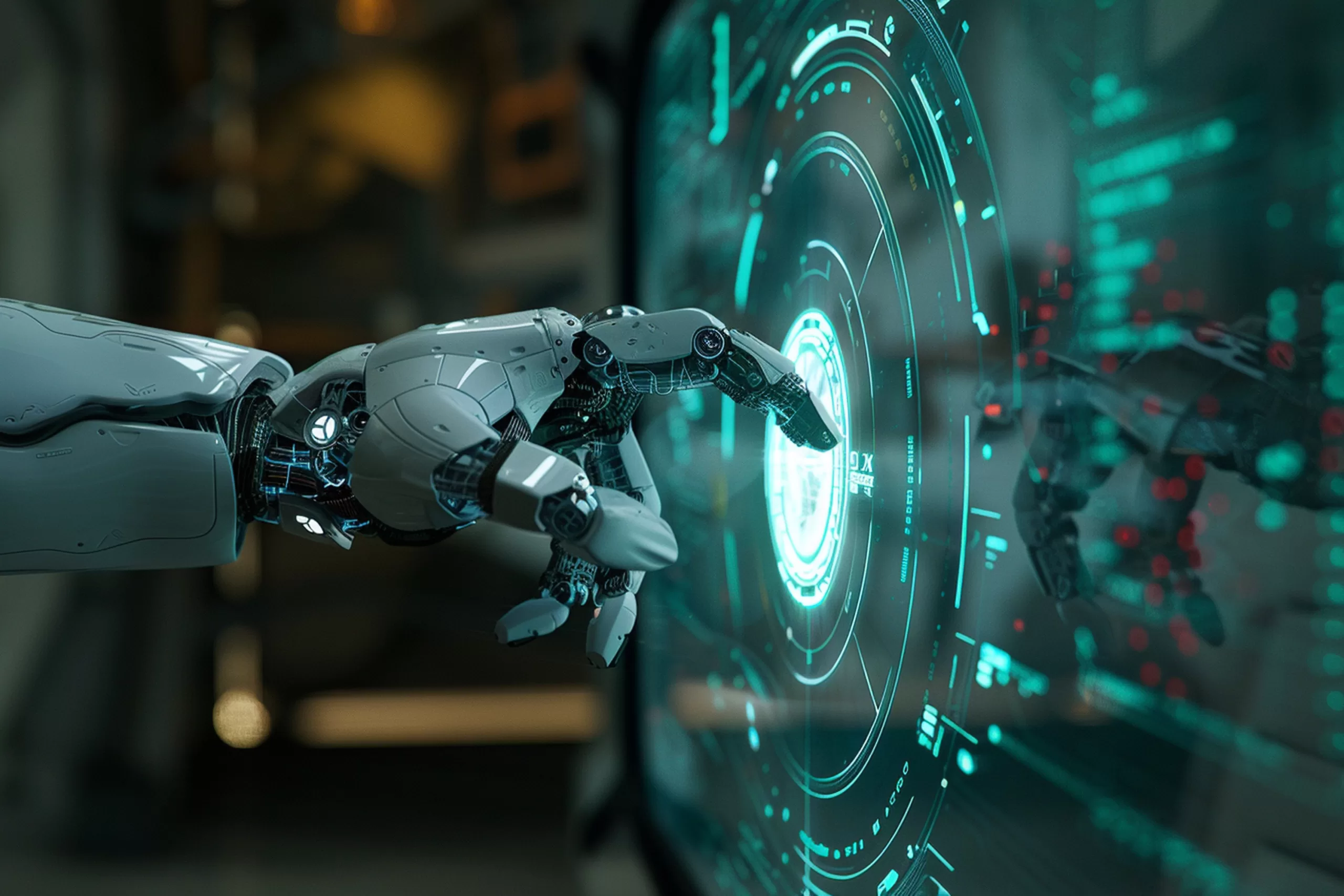If you think 2025 was already intense in terms of technological innovation, brace yourself: 2026 promises to accelerate this pace even further. The difference is that we’re no longer in the experimentation phase. The companies getting ahead are those that can transform trends into actions, implementing solutions that generate results.
Understanding what’s coming has shifted from curiosity to necessity. While some companies are still trying to adapt to yesterday’s changes, others are already building tomorrow’s infrastructure. The good news is that these transformations don’t need to be complex or inaccessible when you have the right partners.
Here at NextAge, we closely follow these developments and reflect them in our projects. Discover the 7 trends in our article.

1. Autonomous AI agents
Forget that AI that only answers questions or generates text. In 2026, artificial intelligence agents will take on complex tasks and make decisions on their own. We’re talking about systems capable of managing entire corporate processes, organizing schedules, and navigating the internet without human supervision.
According to Exame magazine, the expectation for 2026 is that companies will migrate from the reactive AI model to a complete process reinvention. Sectors like healthcare, marketing, and education are already implementing solutions that reduce repetitive tasks and considerably increase productivity.
2. Multi-agent systems (MAS)
If one AI agent is already powerful, imagine several working in coordination. Multi-agent systems represent the next evolution: sets of specialized AIs that interact with each other to solve problems that none of them could handle alone.
A practical example in business is agents handling different stages of a complex process — one focused on data analysis, another on customer communication, a third on inventory management — all synchronized to deliver an integrated result.
These systems are trends for 2026 precisely because of their capacity to orchestrate complex workflows and be end-to-end intelligent automation.
3. Domain-specific language models (DSLMs)
Generalist AI models did an incredible job democratizing access to technology. Now, it’s time for specialization. Domain-Specific Language Models are gaining ground because they offer something generic models can’t: precision within specific contexts.
The difference is clear. A generalist model can have conversations about medicine, finance, and engineering, responding reasonably about any subject. However, a DSLM trained specifically for medical diagnostics understands clinical nuances, technical terminology, and contexts that make all the difference between a generic recommendation and truly useful guidance.
According to Gartner projections, by 2028, more than half of the generative AI models used in companies will be domain-specific. This shift brings advantages such as greater explainability in decisions, reduction of critical errors, and responses adapted to your sector’s reality.

4. AI Security platforms
The more your company depends on AI, the bigger the problem if something goes wrong. Every day new risks are emerging. Prompt injection, sensitive data leaks, unauthorized actions executed by autonomous agents, the list of vulnerabilities grows alongside the technology’s capabilities.
AI security platforms arrive as a response to this scenario. They function as unified shields that protect both internally developed AI applications and those provided by third parties. We’re not talking about traditional antivirus, but systems that monitor suspicious behaviors, detect anomalies in real-time, and apply security policies specific to artificial intelligence.
Gartner projects that by 2028, more than 50% of companies will use platforms dedicated to AI security. This shifts from being a differentiator to becoming a basic requirement, especially in regulated sectors like healthcare, finance, and government.
5. AI-Native development platforms
AI itself is changing how we create software. AI-native development platforms don’t replace developers, they empower them. These tools help engineers write code faster, identify bugs before they cause problems, and even suggest architecture improvements based on millions of examples.
According to Gartner predictions, by 2030, 80% of organizations will have evolved to smaller teams augmented by AI. This means lean teams will be able to deliver complex projects that previously would have required dozens of people. The democratization of development is happening, allowing companies of all sizes to access cutting-edge engineering capabilities.
This has profound implications. Delivery speed increases, operational costs decrease, and the barrier to entry for technological innovation gets lower. However, there’s a side many people ignore: you still need experienced developers who know how to use these tools intelligently and understand when to trust AI suggestions or when to question them.
Here at NextAge, we already work with agile methodologies and services like Nextflow and Referential Scope. Our teams are prepared for this new reality where AI and professionals collaborate in the development process, combining the speed of automation with the critical judgment of human experience.
6. AI supercomputing
This entire AI revolution needs to run somewhere. AI supercomputing represents the evolution of the infrastructure that sustains all of this. We’re talking about the intelligent integration of traditional CPUs, GPUs for parallel processing, specialized ASICs, and even neuromorphic computing that mimics the functioning of the human brain.
This combination isn’t just about having more processing power. It’s about using the right type of processing for each task. Advanced machine learning, complex simulations, and massive data analyses can now happen at a scale and speed that were unimaginable just a few years ago.
Sectors are being transformed by this capability. In healthcare, modeling new medications that would take years now happens in months. In financial markets, simulations of complex scenarios help predict movements and reduce risks. In logistics, optimizations considering thousands of variables are calculated in real-time.
According to the International Monetary Fund, data centers represented 4% of global energy consumption in 2024, with forecasts to double by 2030. This brings a parallel challenge: how to grow sustainably?

7. Human skills on the rise: empathy, ethics, and creativity
Here’s the most interesting paradox of 2026: the more we advance in automation and artificial intelligence, the more valued essentially human skills become. Empathy, ethical thinking, leadership, and creativity cannot be replicated by algorithms, and that’s exactly what makes them increasingly valuable.
Technology takes over operational and repetitive tasks, freeing people to think strategically, create genuine connections, make complex ethical decisions, and imagine solutions that don’t yet exist.
These competencies are fundamental to prevent the workforce from becoming obsolete. It’s not about competing with AI, it’s about learning to work alongside it. Professionals who understand this first will have significant competitive advantage.
What comes next?
2026 won’t be a year of experiments. It will be the moment of consolidation for trends that have been taking shape.
If you want your company to be on top of what’s most innovative, talk to NextAge. We’ve been bringing digital transformation to businesses efficiently for 18 years. Get in touch now.






